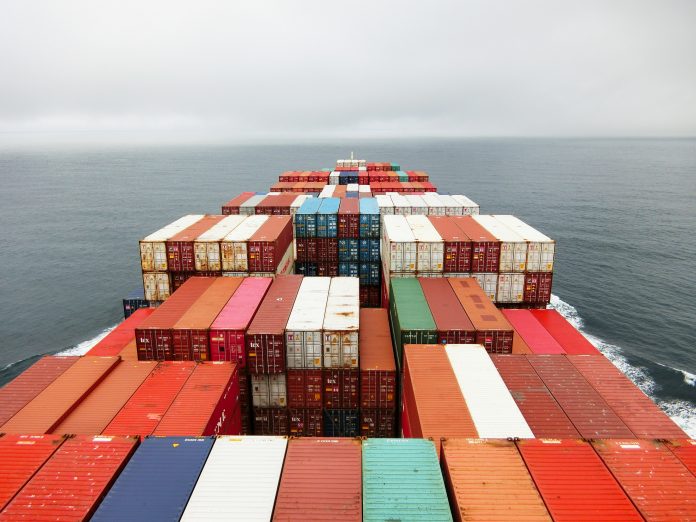According to the United Nations (UN), the agreement reached by 196 nations at COP21 on 12 December 2015, which entered into force nearly a year later on 4 November 2016, is a legally binding international treaty on climate change.
Also known as the Paris Agreement, COP21 established the goal of limiting global greenhouse gas (GHG) emissions to such an extent that the warming of the planet would be limited to at least 2oC and more preferably to below 1.5oC when compared to pre-industrial levels.

Paris was a compromise agreement, its strength lay in the fact that there were no set targets, which allowed an agreement to be reached. But that is also its weakness, because there appears to be no target to work towards.
Nevertheless, the UN declared, “The Paris Agreement is a landmark in the multilateral climate change process because, for the first time, a binding agreement brings all nations into a common cause to undertake ambitious efforts to combat climate change and adapt to its effects.”
Evolution in climate science has since seen the targets of 2oC and 1.5oC has proved to be something of a moving target, with the increase in GHG emissions increasing the onset of the effects of global warming.
The Paris Agreement’s depth lies in its simplicity. With no internationally agreed targets for reducing carbon emissions, the Paris Agreement relies on nationally determined contributions (NDCs) submitted to the UN by 2020, global stock-taking of NDCs in 2023 will then be followed by a similar event every five years with increasingly stringent measures to meet the Paris goals.
“Starting in 2023 and then every five years, governments will take stock of the implementation of the Agreement to assess the collective progress towards achieving the purpose of the Agreement and its long-term goals. The outcome of the global stocktake (GST) will inform the preparation of subsequent NDCs, in order to allow for increased ambition and climate action to achieve the purpose of the Paris Agreement and its long-term goals,” said the UN Framework Convention on Climate Change (UNFCCC).
Clearly, NDCs are critical for the Paris Agreement to have any meaningful impact on the climate crisis, and the European Union has been one of the most ardent backers of the climate accord, with its far-reaching Green Deal.
The European Green Deal provides an action plan to
- boost the efficient use of resources by moving to a clean, circular economy.
- restore biodiversity and cut pollution.
The plan outlines investments needed and financing tools available. It explains how to ensure a just and inclusive transition.
The EU aims to be climate neutral by 2050 and has proposed new climate legislation to turn this political commitment into a legal obligation.
Reaching this target will require action by all sectors of our economy, including
- investing in environmentally-friendly technologies
- supporting industry to innovate
- rolling out cleaner, cheaper and healthier forms of private and public transport
- decarbonising the energy sector
- ensuring buildings are more energy efficient
- working with international partners to improve global environmental standards
In addition, the EU says it will provide financial support and technical assistance to help those that are most affected by the move towards the green economy. This is called the Just Transition Mechanism. It will help mobilise at least €100 (US$122.46) billion over the period 2021-2027 for the most affected regions.
Shipping has not been omitted from the Green Deal with proposals to add shipping to the EU Emissions Trading System (EU ETS). The EU ETS has been criticised as merely a carbon offsetting tool, with critics arguing that it must be replaced with more direct carbon pricing to allow the development of alternative green technologies.
European Community Shipowners’ Associations (ECSA) are also critical of the EU proposals, with ECSA Secretary General Patrick Verhoeven arguing, “Putting unrealistic pressure on IMO [the International Maritime Organization] with regional measures that will gravely hurt a global sector and do very little for climate is not the way to proceed.”
According to Verhoeven the EU ETS far from encouraging a global market-based measure at IMO, the inclusion of shipping into the EU ETS “Will unduly complicate the achievement of an effective and timely global agreement in IMO that everyone in the end wants.”
It is likely that Verhoeven’s view, that everyone in the maritime sector is headed toward a common goal, is correct, but the methods for achieving those aims vary significantly, with a number of shipowners having already asked for market-based measures, effectively a charge of some sort on carbon, to boost the development of zero carbon alternatives.
In April of this year, ahead of the newly elected US President’s, Joe Biden’s, climate summit the World Shipping Council called on world leaders to back a plan for market-based measures.
“With the summit hosted by the United States seen as a vital precursor to COP26 and the IMO’s Marine Environment Protection Committee (MEPC), shipping bodies want leaders to put their political weight behind the industry’s desire to eliminate the 2% of all global CO2 that the sector emits,” said a number of carrier representatives in a joint statement.
A number of organisations, including BIMCO, Cruise Lines International Association (CLIA), International Chamber of Shipping, World Shipping Council, along with other industry groups called on governments to bring forward discussions on market-based measures which are seen as “Critical to incentivise the transition of the global fleet to new fuels and technologies, which will be more expensive than those in use today.”
These organisations are backing a US$2/tonne levy on fossil fuels in order to create a US$5 billion research fund that will expedite the development of zero-carbon fuels. However, the current subsidies afforded to fossil fuels,
According to Oil Change International in 2016, “Governments provided at least US$775 billion to $1 trillion annually in subsidies, not including other costs of fossil fuels related to climate change, environmental impacts, military conflicts and spending, and health impacts. This figure varies each year based on oil prices, but it is consistently in the hundreds of billions of dollars. Greater transparency in reporting would allow for more precise figures.”
More recently the International Energy Agency said that fossil fuel subsidies had fallen by US$120 billion in 2019, mainly due to the fall in fuel prices.
Even so fuel subsidies to oil products remained the largest single component of the total at US$150 billion out of the total US$320 billion. Electricity is the next-largest element of the overall subsidy estimate US$115 billion in 2019, followed by natural gas at US$50 billion and coal totalling US$2.5 billion.
Such subsidies skew the market and limit the scope for the development of sustainable energy sources, while also using up the ‘carbon budget’, the remaining amount of carbon that can be used before there is no hope of limiting global warming to Paris Agreement levels.
Class society DNV points out that a levy on shipping in the form of a carbon tax is to aim at the wrong target. Vessel operators do not generally produce fuel, they are consumers of bunkers. According to Jan Olaf Probst, DNV’s container shipping specialist, applying a tax to bunker fuel is similar to taxing drivers for driving cars, but drivers are not fuel producers, they cannot develop zero carbon fuels. Shipowners are in a similar position, as consumer of oil products.
However, this ignores the choices that owners could make if existing low carbon alternatives were able to compete with the fossil fuel industry on a equal basis. Eventually the use and production of zero carbon fuels would develop, with the consequence that prices would also come down in the longer term.
Many commentators have expressed their scepticism that a US$2/tonne charge would be sufficient to produce these changes, with estimates ranging from US$3-400/tonne seen as more realistic.
With the Marine Environment Protection Committee due to meet at IMO this month the debate will continue. MEPC is expected to approve the Energy Efficiency Existing Ship Index (EEXI) and the Carbon Intensity Index (CII), but critics believe that IMO is still moving too slowly to achieve the Paris Agreement targets, with the regulation in its current form still allowing polluting vessels to continue operating for up to three years after the implementation of the rules.
 Hotline: 0944 284 082
Hotline: 0944 284 082
 Email:
Email: 


 VN
VN